Maritime Archaeology Unit: Safeguarding the Underwater Cultural Heritage of the country
Sri Lanka has both documentary and archaeological evidence for a civilization that spans over two-and-a-half millennia. Sri Lanka had also been an important center in a global trade world stretching from Rome to China, from India to Indonesia, from Indonesia to Madagascar and East Africa. The waters of this area were crisscrossed by “sewn” ships and land routes by caravans of the “ships of the desert”; by traders and by travelers, by mariners, merchants, and monks.
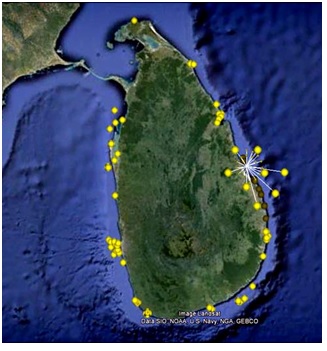
During the last fifty years, many wrecks of Dutch and European steam powered ships, circa 17th century CE have been discovered around Sri Lanka. Stone anchors used by Chinese and Arab traders of 13th-14th century CE are suggestive of wrecks of different origins. The era beyond that is shrouded in mystery. Recent investigations by the Maritime Archaeology Unit of Sri Lanka have shed light on some of these ancient ghosts. A wooden wreck located in 2008 in southern Sri Lanka was dated to the 2nd century BCE. Now known as the Godawaya wreck, it is still under excavation as of this now. In last few years many systematic and random explorations were carried out. Archival research and remote sensing expeditions were carried out as same as we were working close with local divers and fishermen.
During the last fifty years, many wrecks of Dutch and European steam powered ships, circa 17th century CE have been discovered around Sri Lanka. Stone anchors used by Chinese and Arab traders of 13th-14th century CE are suggestive of wrecks of different origins. The era beyond that is shrouded in mystery. Recent investigations by the Maritime Archaeology Unit of Sri Lanka have shed light on some of these ancient ghosts. A wooden wreck located in 2008 in southern Sri Lanka was dated to the 2nd century BCE. Now known as the Godawaya wreck, it is still under excavation as of this now. In last few years many systematic and random explorations were carried out. Archival research and remote sensing expeditions were carried out as same as we were working close with local divers and fishermen.
The Maritime Archaeology Unit (MAU) was founded in 2001 under the aegis of the Mutual Heritage Centre. It is managed by the Central Cultural Fund and sponsored by the Netherlands Cultural Fund for specific projects. Following the early research and explorations connected with the Galle Harbour Project of 1992, the Central Cultural Fund (CCF) and the Department of Archaeology took the initiative to make maritime archaeologists and conservators out of the archaeology graduates from the relevant institutes and the universities. Our main intention is to develop the maritime archaeological field in Sri Lanka in order to protect our valuable underwater cultural heritage.
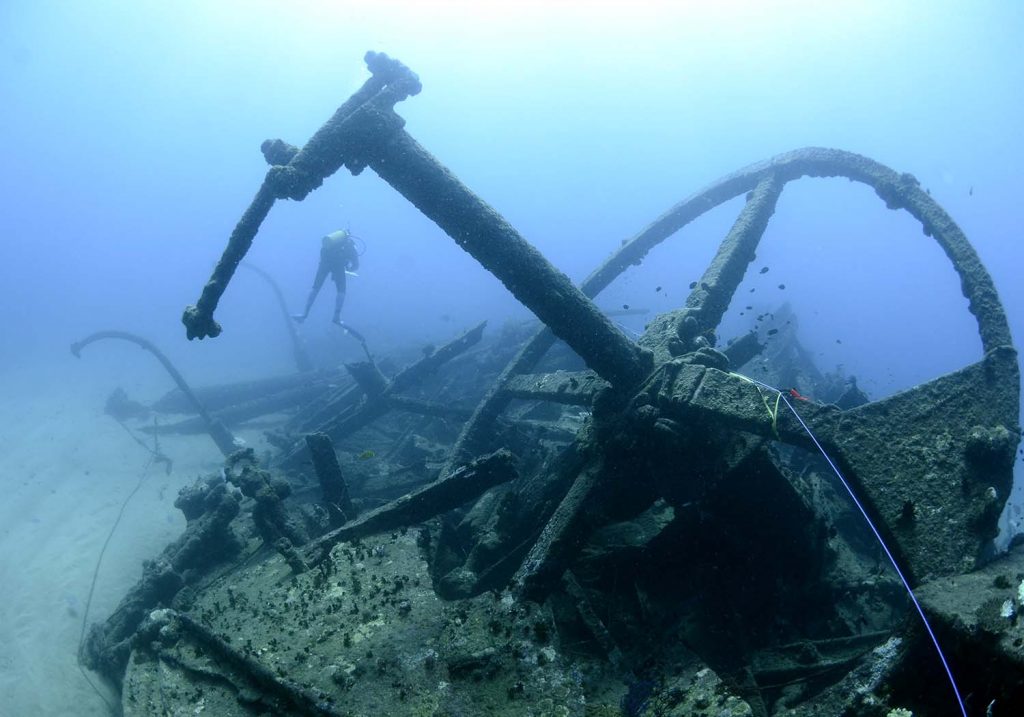
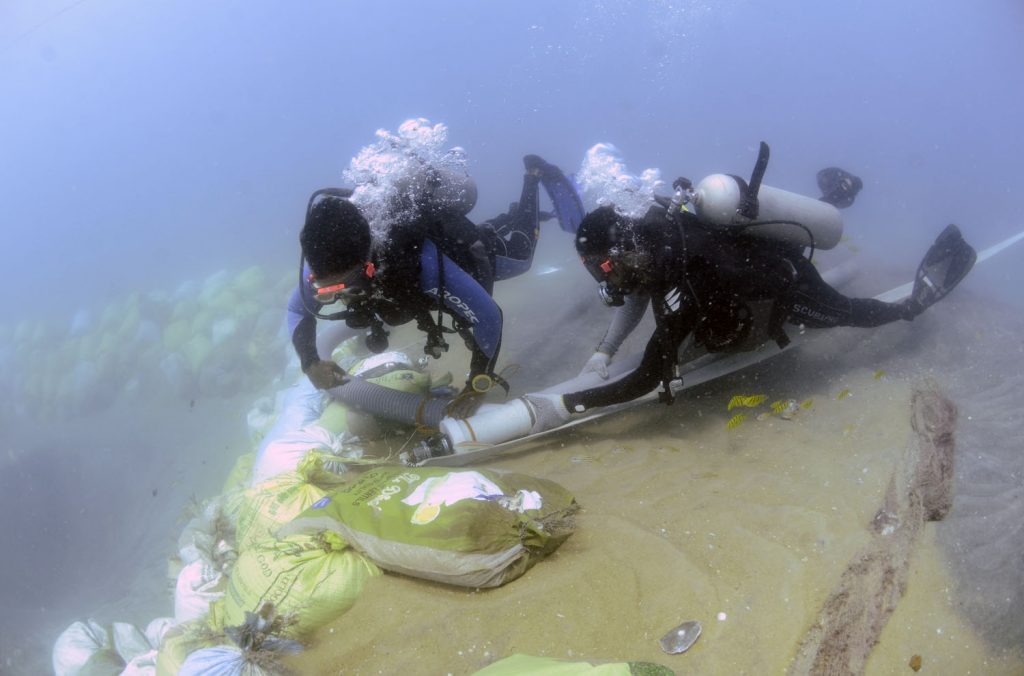
Excavationand research work on 18th century shipwrecks along the East Coast
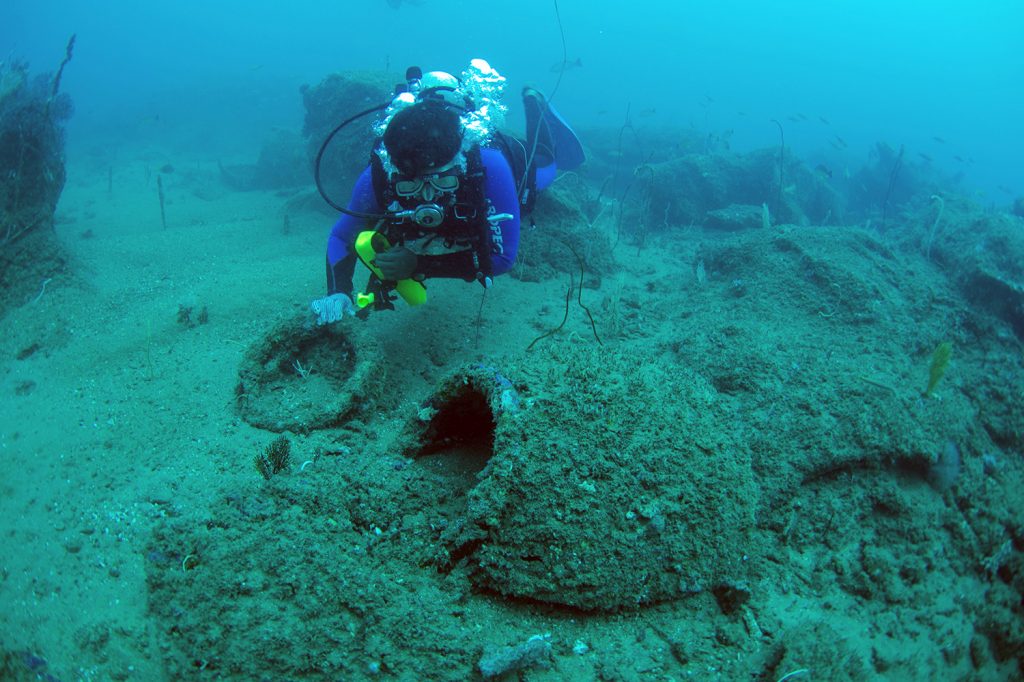

Godawaya shipwreck site (2nd century BCE), Southern Coast of Sri Lanka
The Unit consists of an archaeological diving unit, conservation laboratory and a research library, which is situated on one of the jetties of the old harbour of Galle. Apart from that, the Maritime Archaeology Museum is located inside the Galle fort. Teams of maritime archaeologists and conservators from Central Cultural Fund and other related institutes are working at Galle.
Sri Lankan legislation already provides strong protection provides a framework for management. There is still a need, however, to find pathways to effectively apply legislation to better protect the UCH in this country. The formal adoption 2001 UNESCO Convention on the Protection of Underwater Cultural Heritage which Sri Lanka hopes to ratify soon, is a further step in the right direction. Fortunately, Sri Lanka is not burdened with well-organized treasure hunters with modern technology that impact so heavily on submerged cultural heritage in other parts of the world, but small scale looting and collection does occur all around the country. Apart from enforcing the existing law the best way to protect the underwater cultural heritage is the awareness. The Maritime Archaeology Unit spends considerable amount of time and resources to record and monitor shipwreck sites as well as building awareness among local diving and fishing community.
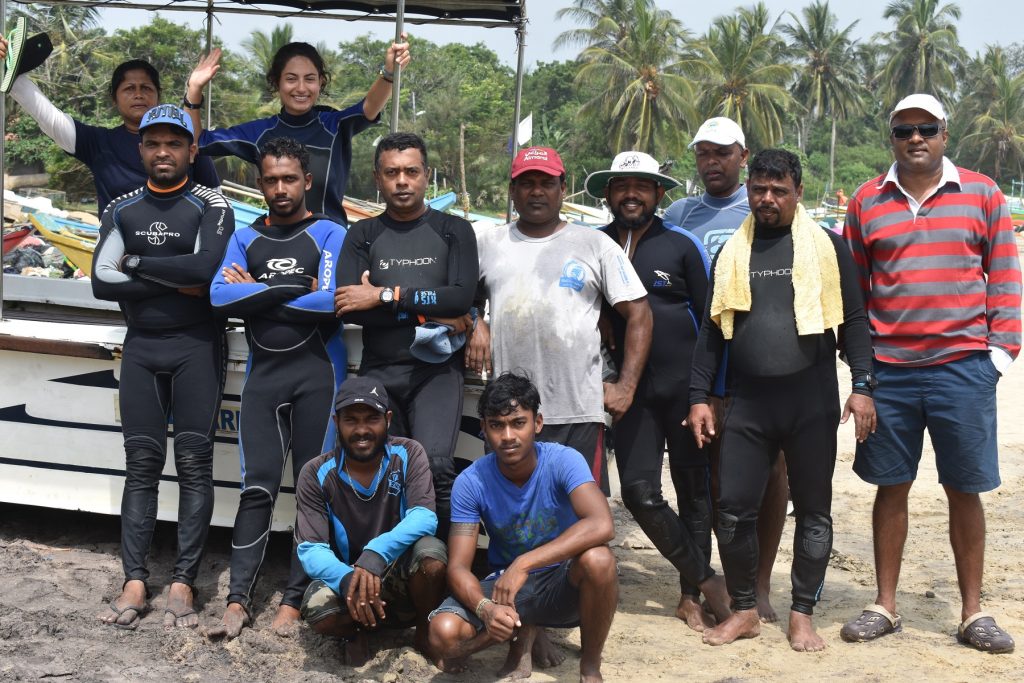
Bibliography of UCH in Sri Lanka
Online
Central Cultural Fund (2012) UNESCO – AAHM Field School. [Online]. Available at: http://www.mausrilanka.lk/projects/Projects.html
Central Cultural Fund (2013) Ancient port city of Godawaya and the recent discovery of the unknown wooden wreck with Black & Red Ware. [Online] Available at: http://www.mausrilanka.lk/sub%20pages/Godawaya.html
Cultural Heritage Connections (CHC) (2011a) UNESCO field school for Underwater Cultural Heritage. [Online]. Available at: http://www.culturalheritageconnections.org/wiki/UNESCO_fieldschool_for_Underwater_Cultural_Heritage
Cultural Heritage Connections (CHC) (2011b) Advanced Course on GIS Application in the Management of Underwater Archaeology. [Online]. Available at: http://www.culturalheritageconnections.org/wiki/Advanced_Course_on_GIS_Application_in_the_Management_of_Underwater_Archaeology
Devendra, S., Muthucumarana, Rasika., (2013), Maritime Archaeology and_Sri_Lanka
https://www.academia.edu/14502023/Maritime_Archaeology_and_Sri_Lanka
Devendra, S., Muthucumarana, Rasika., (2015), Shipwreck Around The World
https://www.academia.edu/14501974/Shipwrecks_around_the_World
Gunawardhana, A. and Ariyawansa V. (2012) Fifty Years After Ran Muthu Duwa. Daily News [online] 07 August 2012. Available at: http://archives.dailynews.lk/2012/08/07/fea27.asp
Muthucumarana, Rasika., (2008) A FIGHT FOR THE BLUE Maritime Archaeology in a Developing Nation
https://www.academia.edu/9761937/A_FIGHT_FOR_THE_BLUE_Maritime_Archaeology_in_a_Developing_Nation
Muthucumarana, Rasika., (2008), Recently discovered shipwrecks in Sri Lankan waters
https://www.academia.edu/41283651/Recently_discovered_shipwrecks_in_Sri_Lankan_waters
Muthucumarana, Rasika., (2014),Preliminary assessment of an early historic 2000 year old shipwreck at Godawaya Sri Lanka
https://www.academia.edu/9761939/Preliminary_assessment_of_an_early_historic_2000_year_old_shipwreck_at_Godawaya_Sri_Lanka
Muthucumarana, Rasika., (2014), An Early Historic Assemblage Offshore of Godawaya Sri Lanka Evidence for Early Regional Seafaring in South Asia
https://www.academia.edu/12285902/An_Early_Historic_Assemblage_Offshore_of_Godawaya_Sri_Lanka_Evidence_for_Early_Regional_Seafaring_in_South_Asia
Parthesius, R., (2005), Preliminary Report on the Excavation of the 17th Century Anglo Dutch East Indiaman Avondster in Bay of Galle Sri_Lanka
https://www.academia.edu/882787/Preliminary_Report_on_the_Excavation_of_the_17th_Century_Anglo_Dutch_East_Indiaman_Avondster_in_Bay_of_Galle_Sri_Lanka
Other
Bonke, H., Parthesius, R., Ketel, C. P. (eds) (2007) Artefact Catalogue of Avondster Site 1998-2004. Special Publication No 02. The Netherlands: The Centre for International Heritage Activities.
Clarke, A. C. (1957) The Reefs of Taprobane. 1st ed. New York: Harper & Bros.
Clarke, A. C. (1964) The Treasure of the Great Reef. 1st ed. New York: Harper & Row.Clarke, A. C. (1974) The Treasure of the Great Reef. 1st revised print. New York: Ballantine Books Inc.
Godakumbura, C.E. (1964) Administration Report of the Archaeological Commission for the Financial Year 1962-63. Ceylon: Government Press.
Green, J., Devendra, S. (eds) (1993) Maritime Archaeology of Sri Lanka – The Galle Harbour Project – 1992. Colombo, Sri Lanka: Post Graduate Institute of Archaeology.
Green, J., Parthesius, R. (eds) (1997) Galle – Port City in History. Special Publication No 2. Australia: National Centre of Excellence in Maritime Archaeology.
Muthucumarana, R. (ed) (2005) Maritime Lanka Magazine. Colombo, Sri Lanka: Central Cultural Fund.
Parthesius, R., Miller, K., Devendra, S., Green, J. (eds) (2003) Avondster Project Report 2001-2002. The Netherlands: Amsterdam Historical Museum.
Prott, L.V. (ed.) (2006) Finishing the Interrupted Voyage: Papers of the UNESCO Asia-Pacific Workshop on the 2001 Convention on the Protection of the Underwater Cultural Heritage. Leicester: Institute of Art and Law
